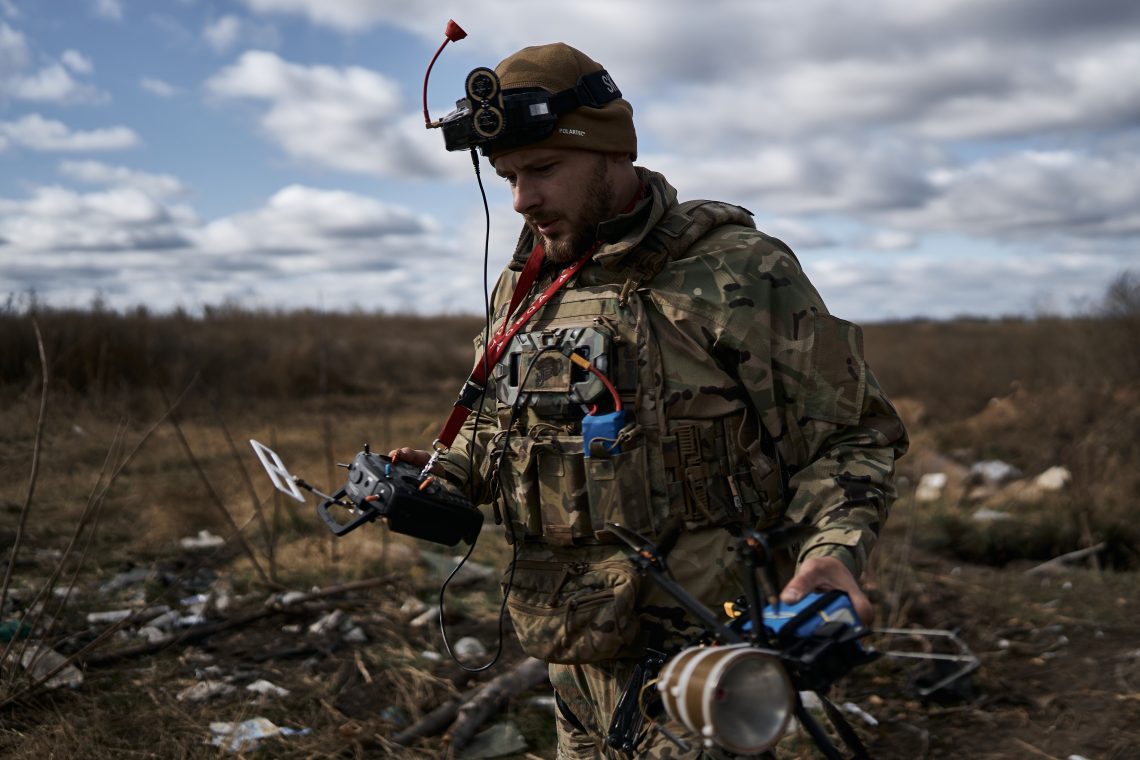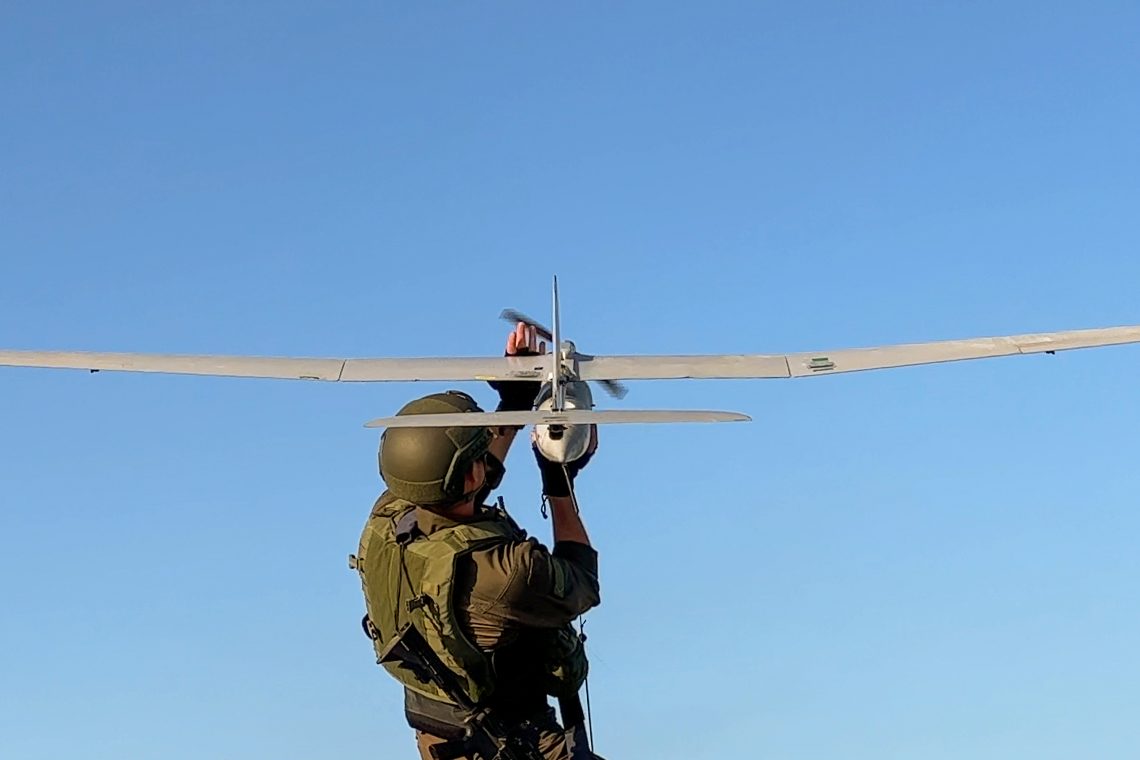The post The Supreme Court granted Trump amnesty it has no power to give – The Hill first appeared on The Trump Investigations – trumpinvestigations.net – The News And Times.
The post ‘Chaos’ in Donald Trump’s Republican party will boost Joe Biden, Democratic memo says – Financial Times first appeared on The Trump Investigations – trumpinvestigations.net – The News And Times.
Overspending must stop or America will go bankrupt https://t.co/U34EFcsxCW
— Elon Musk (@elonmusk) March 13, 2024
On the anniversary of his election, let us pray for Pope Francis.
V. Let us pray for Francis, our Pope.
R. May the Lord preserve him, and give him life, and make him blessed upon the earth, and deliver him not up to the will of his enemies. pic.twitter.com/eKQLFOyaKq— Vatican News (@VaticanNews) March 13, 2024
Israel and the Electronic Warfare in Ukraine – Google Search https://t.co/YOesirebRr – https://t.co/KDSEmne0bQ
— Michael Novakhov (@mikenov) March 13, 2024
Paula Conway
- I paid $6,100 for my party of six to do a VIP tour at Disneyland.
- This price included the cost of the VIP tour, park-hopper tickets, and a tip for the tour guide.
- As VIPs, we didn’t have to wait in line for rides and got a last-minute character meet and greet.
It’s hard to imagine forking over about $6,100 for a day at Disneyland. But that was my bill for a six-person family vacation ― and it was worth it.
For my nephew’s fourth birthday, we decided to book a VIP tour and take on both Disneyland and California Adventure in one jam-packed day.
Although the price of a VIP tour varies based on the time of year, I paid $4,900 for a seven-hour experience, not including the price of park tickets.
Because we wanted to see both parks, and had to purchase tickets to do the tour, we chose to purchase park-hopper tickets. In total, I spent about $6,100, including the tip for our tour guide.
Here’s what our VIP-tour experience was like.
We started enjoying all the perks as soon as we met our VIP tour guide
We met our guide at the VIP tour desk inside Disney’s Grand Californian Hotel & Spa. She explained that she’d be with us all day and would personalize the itinerary to make sure we got to do everything we wanted to.
She also told us we could go on all the rides we wanted without waiting in any lines, which was a huge perk since we were traveling with two small kids.
Our VIP guide took photos of us throughout the day.
Paula Conway
Throughout the day, our guide used our phones to snap pictures of us around the parks. Taking unique group photos isn’t easy, so this was an incredible perk.
Another pleasant surprise was that we’d often get off a ride to find our guide waiting for us with water or popcorn.
The VIP experience made traveling with small children much easier
The VIP guide entertained my niece while we went on Radiator Springs Racers.
Paula Conway
When we went on Radiator Springs Racers in California Adventure, our guide entertained my 2-year-old niece, who was too small to ride. This meant all the adults got to experience the ride with my nephew.
When we crossed into Disneyland, we went straight for the carousel. Horses and benches on the ride are first-come, first-served, but our guide reserved a bench for us. This was incredibly helpful because my niece, who was starting to get cranky, was able to sit next to her dad.
While we were on the carousel, our guide worked her magic and set up a character meet-and-greet with Anna and Elsa from “Frozen.”
We got a last-minute meet-and-greet with Anna and Elsa from “Frozen.”
Paula Conway
Typically, there’s a long line to meet characters at Disneyland. With a VIP guide, however, we got to go in first.
The kids were mesmerized, and we appreciated the cleverly-arranged pick-me-up to reengage them.
Our guide arranged a unique birthday celebration for my nephew, and secured us VIP seating for the parade
During lunch, our guide surprised my nephew with a Mickey Mouse cake.
Paula Conway
We enjoyed lunch at Blue Bayou, which was spectacular. Although the meal wasn’t included in the price of our VIP tour, our guide secured the last-minute reservation, which would have been almost impossible to get on our own.
She even made arrangements for a Mickey Mouse-themed cake to be delivered for my nephew’s birthday celebration.
After lunch, we had time for a few more rides before taking our seats for the parade.
We got prime seating in a roped-off VIP section at the parade.
Paula Conway
We were in a special roped-off section for VIP guests and could see every float up close.
Overall, the VIP experience was totally worth it
For a great deal of money, we were able to do two parks in one day and never waited in a line. We had concierge access to a character meet-and-greet and last-minute dining reservations, including a birthday cake.
Among the perks, our guide pushed the stroller, met us with water bottles and snacks after rides, took action shots of the family, and got us into the evening parade with VIP seats.
The trip of a lifetime with family was worth paying for.
When you buy through our links, Business Insider may earn an affiliate commission. Learn more
Johnny Sexton, the former Ireland captain, with the Six Nations trophy in 2023
David Rogers/Getty Images
It’s the final weekend of the annual rugby tournament featuring Europe’s finest teams, and there’s still plenty to play for after Ireland was beaten by England last week. The race to avoid the wooden spoon at the other end of the table is super close, too. So, let us show you where to watch the Six Nations live streams for free from anywhere in the world. These options cover every game this weekend.
If you don’t have a proper watch option in your country, we’ll show you how to watch Six Nations live streams for free using a VPN. Short for virtual private network, these handy apps let your devices mimic various international locations of your choosing so that you can hop onto one of the all-inclusive streaming sources listed below.
This final round of matches features all three games on Saturday. We’ve included a full Six Nations fixture list below if you want to plan ahead and ensure you’re free for your favorite clashes.
2024 Six Nations live stream quick links:
- Access FREE live streams internationally via ExpressVPN (try it risk-free for 30 days)
- UK: ITVX (free) /BBC (free)
- USA: Peacock ($5.99 monthly)
- Ireland: Virgin Media 1 (free) / RTE Player (free)
- Australia: Stan Sport ($25 monthly with Sport add-on)
- France: FranceTV 2 (free)
- When: February 2 – March 16
- Next games:
- Saturday, Mar 16 – Wales vs. Italy 10:15 p.m. ET / 2.15 p.m. GMT / 10:15 p.m. AWST – free on BBC
- Saturday, Mar 16 – Ireland vs. Scotland 12:45 p.m. ET / 4.45 p.m. GMT / 12:45 a.m. AWST – free on ITV
- Saturday, Mar 16 – France vs. England 4 p.m. ET / 8 p.m. GMT / 4 a.m. AWST – free on ITV
Where to watch free Six Nations live streams from anywhere
You can catch all of the Six Nations action using a mix of ITVX and the BBC iPlayer in the United Kingdom. As listed above, the BBC has the first game on Saturday before handing over to ITV for the other two games. While ITV and the BBC are UK-based platforms, you can access them from anywhere through a VPN.
A VPN virtually changes your devices’ location, so apps and websites think you’re connecting from servers within those countries. In the case of the Six Nations, you can connect through a UK server, and ITV/BBC will let you in with no fuss after creating a free email login.
If you’re in the US, you can go the VPN route, or it’s only $5.99 a month to pick up the required Peacock subscription that covers you for every game.
Don’t have a VPN? There’s a fantastic offer right now on the best VPN we’ve tested and have been using for years for streaming and beefing up our online security. You can pick up ExpressVPN, save 49% on the usual price, and get three months for free. It’s the best investment in your sports-watching future if you know you’ll want to watch more international sports streams. If you’re unsatisfied, there’s a hassle-free 30-day money-back guarantee. Want to learn more about the product? Take a look at our ExpressVPN review.
How to watch the Six Nations with a VPN
- Sign up for a VPN if you don’t have one.
- Install it on the device you’re using to watch the game.
- Turn it on and set it to a UK location.
- Go to ITVX or BBC iPlayer (check the fixture list below).
- Sign in/create a free login and watch the matches.
- When: February 2 – March 16.
How to watch the Six Nations in the USA
NBC is the exclusive broadcast partner for the Six Nations in the United States. All games will stream live on its Peacock streaming service (starts at just $5.99 monthly).
Or, if you have a VPN, you can watch all of the Six Nations matches for free using the UK option as described above.
How to watch Six Nations games live in the UK
ITV and the BBC share the official broadcasts for the Six Nations 2024 edition in the UK. All games will be covered, with three of them each weekend. Both services can be viewed on smart TVs, streaming sticks, consoles, laptops, and more.
How to watch the Six Nations in Australia
Australian Six Nations live streams are on Stan, specifically the Sports tier, which with the required basic package underneath it, will run you AU$25 per month. That’s a hefty fee, especially when you have to get up extra early for most games. If you fancy a free route, check out the VPN tips above to get that UK coverage for free.
Six Nations 2024 schedule
We’ve listed all the Six Nations fixtures below, along with their local UK/Irish times. You’ll also see a mention of which free channel the game is on in the UK to save time on checking TV guides.
Week 1
- Friday, Feb 2 – France vs. Ireland 8 p.m. (ITV)
- Saturday, Feb 3 – Italy vs. England 2.15 p.m. (ITV)
- Saturday, Feb 3 – Wales vs. Scotland 4.45 p.m. (BBC)
Week 2
- Saturday, Feb 10 – Scotland vs. France 2.15 p.m. (BBC)
- Saturday, Feb 10 – England vs. Wales 4.45 p.m. (ITV)
- Sunday, Feb 11 – Ireland vs. Italy 3 p.m. (ITV)
Week 3
- Saturday, Feb 24 – Ireland vs. Wales 2.15 p.m. (ITV)
- Saturday, Feb 24 – Scotland vs. England 4.45 p.m. (BBC)
- Sunday, Feb 25 – France vs. Italy 3 p.m. (ITV)
Week 4
- Saturday, Mar 9 – Italy vs. Scotland 2.15 p.m. (ITV)
- Saturday, Mar 9 – England vs. Ireland 4.45 p.m. (ITV)
- Sunday, Mar 10 – Wales vs. France 3 p.m. (BBC)
Week 5
- Saturday, Mar 16 – Wales vs. Italy 2.15 p.m. (BBC)
- Saturday, Mar 16 – Ireland vs. Scotland 4.45 p.m. (ITV)
- Saturday, Mar 16 – France vs. England 8 p.m. (ITV)
Note: The use of VPNs is illegal in certain countries, and using VPNs to access region-locked streaming content might constitute a breach of the terms of use for certain services. Insider does not endorse or condone the illegal use of VPNs.
Attack drones are transforming modern battlefield operations, with today’s conflicts serving as laboratories for rapid innovation.
 A Ukrainian military drone pilot attaches an explosive to an FPV drone at the front line near Bakhmut, Ukraine, on October 24, 2023. © Getty Images
A Ukrainian military drone pilot attaches an explosive to an FPV drone at the front line near Bakhmut, Ukraine, on October 24, 2023. © Getty Images
- First-person view drones unlock new offensive capabilities
- Ukrainian and Israeli forces have been pioneers in their use
- Countermeasures will likely catch up, mitigate the long-term impact
In the rapidly evolving military technology landscape, unmanned aerial vehicles (UAVs) have emerged as the most salient in a long list of disruptive technologies. Drones have altered the face of modern battlefield operations far beyond the generally assumed advances – including in some of today’s most active conflicts. Today’s UAVs offer not only enhanced surveillance and reconnaissance but also tactical offensive capabilities.
Among the myriad types available, first-person view (FPV) drones stand at the cutting edge, giving operators real-time situational awareness and the ability to precisely destroy targets of opportunity. Most importantly, FPV drones offer stand-off precision weaponry at a fraction of the cost compared to conventional complex precision munitions, and with minimal training. In the words of frontline operators this author has worked with, they are effectively “cruise missiles in a backpack.”
This unanticipated reconfiguration of civilian grade, commercial-off-the-shelf (COTS) technology is having a growing effect on battlefield operations in contemporary Ukraine and Israel/Gaza, blurring the distinction of what makes for a technically superior adversary. FPV drones are the quintessential asymmetric weapon – the latest round in a rapid arms race pitting cheap, amateur-deployed weapons against expensive, highly technical legacy systems. Used properly, attack drones can act like David’s sling against Goliath’s sword.
Crucially, however, while drones are here to stay, these weapons are unlikely to continue to dominate battlefield operations, as the countermeasures eventually catch up to their asymmetric advantages.
FPV drones have gained prominence for providing operators with a live video feed, allowing them to navigate and control the device as if they were physically on board. This immersive experience enhances the operator’s situational awareness and ability to react, making them invaluable for defense purposes.
The roots of FPV technology can be traced to the early days of radio-controlled model aircraft. However, it was the integration of compact cameras and real-time video transmission capabilities that propelled these drones into the mainstream. As technology iterated, they evolved from hobbyist gadgets (often used in drone racing) to sophisticated tools with military-grade applications.
The key characteristics of FPV drones are: 1) real-time video transmission, allowing operators to make immediate decisions on the fly; 2) immersive, first-person control, enabling more precise and responsive maneuvers; and 3) their compact size and maneuverability, making them suitable for diverse environments.
These qualities are especially valuable in a military context, and it was only a matter of time before these nominally “commercial” tools were refitted to a combat role.
This report is an assessment of FPV drone deployment in parallel theaters of operations: the Ukrainian eastern front against Russia and the Israeli fronts against Hamas in the Gaza Strip and Hezbollah along the Lebanese border.
While both sides in each theater use FPV drones, in Ukraine it is the “underdog” (Ukrainian forces) that currently has a marginal edge in the development and deployment of attack drones. In Israel, however, the nominally superior force (the Israel Defense Forces) also maintains an advantage in attack drones. This probably reflects the creative technical advantages that accrue to relatively free societies compared to authoritarian ones. Hackers and tinkerers appear somewhat slower to innovate under the heavy hands of both Russian and Hamas authorities.
That said, the advantages to Ukrainian or Israeli forces are anything but guaranteed. In Ukraine, it is said that Russia is a slow learner, but when it learns, it does so at scale. As Russian forces outproduce Ukrainians in building and deploying drones (even while remaining slower to innovate), asymmetries may appear on both sides of the Surovikin Line. In Israel, too, Hamas for similar reasons may find it most efficient to allocate more of its dwindling resources toward the asymmetries of drones as one of the only viable ways to make progress.
While more countries invest in FPV drone technology, predictions of seismic shifts in military capabilities are likely exaggerated.
In Ukraine, the first hints of weaponized civilian drone technologies were observed with crude camera drones used to drop grenades. Since then, the pace of military-hacked COTS drones has escalated rapidly. Ukrainian forces now utilize FPV drones to conduct tactical surveillance and reconnaissance, gaining critical intelligence on enemy movements and positions as well as directly attacking targets. The ability to deploy these devices in contested areas while minimizing risks to human life significantly enhances both tactical and strategic decision-making.
Moreover, Ukraine has had growing success in attacking distant targets such as the attack on Tu-22 bombers at Soltsy-2 Airbase in August or numerous assaults on the Kerch Bridge in Crimea. More recent attacks on fuel and ammunition depots in Luhansk have forced Russia to reposition its resources at considerable expense. Russian audio feeds of such attacks demonstrate that the reflexive response to drone attacks is to “scatter,” dispersing manpower and equipment to reduce their targetable signature. Drone strikes thereby not only impact their immediate target but disrupt the larger operational ecosystem of the targeted force.
Currently, according to frontline operators on the Donetsk front, the most common countermeasures against FPV drones are jammer units (known as “domes”) placed atop armored vehicles, as well as backpack-carried omnidirectional jammers for infantry. A primary limitation of these jammers is that they need sufficient power in a certain frequency sector, which constrains their operations to a narrow set of the most popular frequency ranges.
Eyewitness to war: Assessing Ukraine’s counteroffensive
According to one fighter: “A logical response from drone manufacturers is to introduce new control frequencies that are not yet covered by jammers or GPS spoofers. This constant catch-up game in technology development will sooner or later lead to all frequencies being suppressed in the combat contact zone, from kilohertz to satellite communication.”
Russian forces are adapting to this eventuality, with field intelligence reporting they are “using partially autonomous FPV drones, which are guided by an operator until the loss of communication, and then automatically select a target based on image recognition technologies through their own camera.” Moreover, according to my source, “the cost ratio of [anti-drone] missiles to cheap long-range drones, such as the Iranian Shaheds, is strategically advantageous for the attacking side in a long-term game, and Russia seems willing to wait. Therefore, it is necessary to develop counter-drone measures based on new physical principles; for example, using directed electromagnetic pulses when deploying air defense at power stations where there are sufficiently powerful energy sources.”
Israel has long been recognized as a pioneer in military technology, with a robust defense industry that continually pushes the boundaries of technical innovation. In the realm of FPV drones, Israel has made significant strides, developing cutting-edge technologies that enhance surveillance and offensive capabilities (such as the ability to fire 40mm grenades). Meanwhile, Hamas (and to a lesser extent Hezbollah) militants are in a much better position to take advantage of the asymmetries of attack drones. While they have yet to fully adopt these FPV technologies, the outsize benefits against a large, mechanized adversary like the IDF are simply too large to ignore indefinitely.
FPV use by the IDF is more common in the northern front against Hezbollah than its operations in the Gaza Strip against Hamas. This is due in part to existing IDF air superiority, with fighters reporting they “can call in a two-thousand-pound JDAM [Joint Direct Attack Munition] and take out a whole building” rather than rely on attack drones. In Gaza operations, especially, the frequency environment is so swamped with jamming and GPS spoofing transmissions that operators say civilian-grade FPV signals are “lost in the sauce,” making it difficult to deploy friendly FPV units.
 An Israel Defense Forces reservist from the “Sky Rider” unit launches a surveillance drone known as the Skylark, for an operation near the Gaza border on December 11, 2023, in southern Israel. © Getty Images
An Israel Defense Forces reservist from the “Sky Rider” unit launches a surveillance drone known as the Skylark, for an operation near the Gaza border on December 11, 2023, in southern Israel. © Getty Images
Advances are being made by both sides to avoid drone dependence on civilian signals/navigation aids. For instance, since most GPS signals in Gaza are spoofed to force drones to self-locate to alternate locations, adaptations of radio-frequency high-gain antennas are used to allow COTS drones to bypass this inherent weak link. The use of drones by Hezbollah, seen in the first moments of Hamas’s October 7 attack on Israel, appears so far to be essentially dependent on GPS. They also increasingly employ a “mini-Shahed,” kamikaze-type drone with a range of 10-20 kilometers.
Techniques for pinpointing and eliminating adversary drone operators have become a major focus, and all sides are investing heavily in sophisticated detection equipment and strategies. Nevertheless, in both theaters, the limiting factor for successful FPV deployment is less technical capacity than access to training. As an operator embedded within the IDF has noted, the successful use of attack drones is technically “pretty simple,” but there is a basic “knowledge issue” at play: combatants with real-life experience, especially experience gained from operations in Ukraine, are at a premium because they “just know what they’re doing.” Simple tricks, techniques and hacks (such as fusing explosives with caps) can be of extraordinary value.
The deployment of FPV drones by Ukrainian and Israeli forces underscores their transformative impact on modern warfare. As nations leverage the advantages of real-time situational awareness, enhanced reconnaissance capabilities and surgical munitions delivery, the geopolitical landscape evolves accordingly. The use of FPV attack drones on the Ukrainian and Israeli fronts has had ripple effects, influencing the geostrategic balance of power in complicated and often counterintuitive ways.
Nevertheless, while more countries invest in and deploy FPV drone technology, predictions of seismic shifts in military capabilities and alliances are likely exaggerated. Yes, the rapid evolution of FPV drones contributes to an arms race, with adversaries seeking to outpace each other in developing ever-more-advanced systems. Yet this contest of measure/countermeasure is likely to reach a kind of equilibrium in relatively short order (one to three years). The proliferation of FPV drones raises legitimate concerns about their use in future conflicts and consequences for global security, but their current reputation as a fundamental disruptive technology is probably overblown.
It is unlikely that attack drones will continue their meteoric dominance of the battlespace for the long term. Such a scenario would see advances in capability continue apace, particularly in integrating artificial intelligence – and to do so faster than innovations in drone interdiction countermeasures. This scenario is not to be discounted – and is clearly critical in the short term (one year) – but is unlikely to define the long-term outlines of conflict.
As drone technologies develop, we will most likely witness an escalating arms race toward increasingly smaller, more surgical weapons coupled with more adept countermeasures to defeat them. Defenders learn quickly, and a new technical detente will emerge that reaffirms the basic advantages of advanced economies’ military hardware investments.
As the recent Houthi drone attacks in the Red Sea demonstrate, drone countermeasures to protect expensive military hardware – developed and deployed years or decades earlier – will be paramount. Drones therefore represent a significant reallocation of resources but not a wholesale transformation of military strategy.
For industry-specific scenarios and bespoke geopolitical intelligence, contact us and we will provide you with more information about our advisory services.

Receive insights from our experts every week in your inbox.
The post How attack drones are shaping conflict in Ukraine and Israel first appeared on The Ocean Avenue News – The News And Times.

